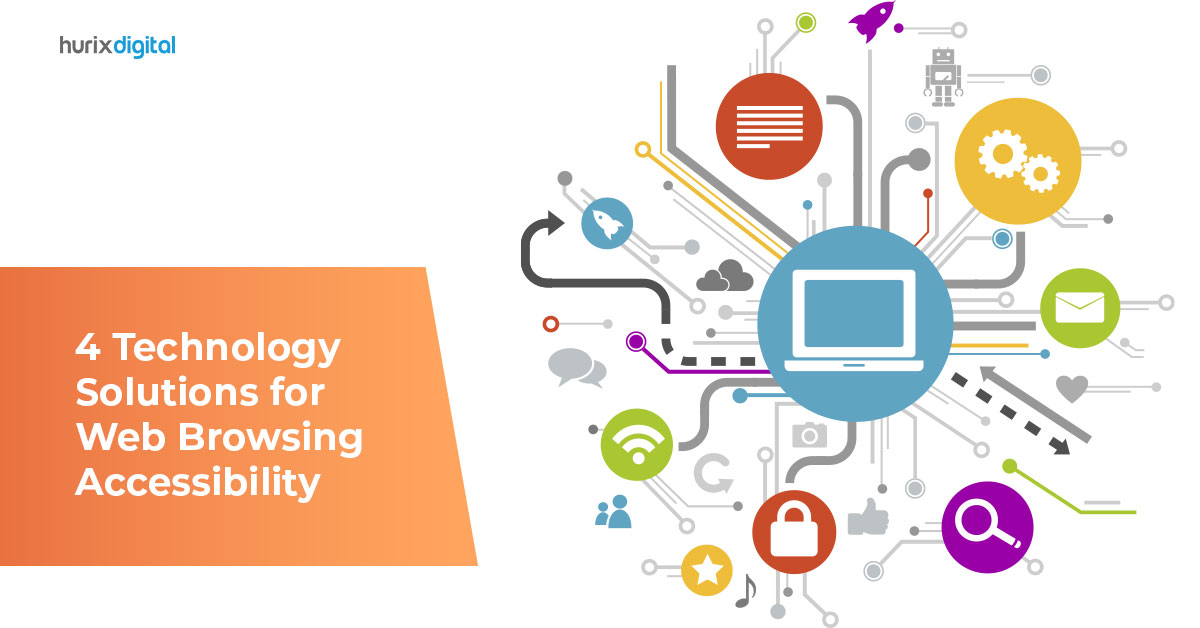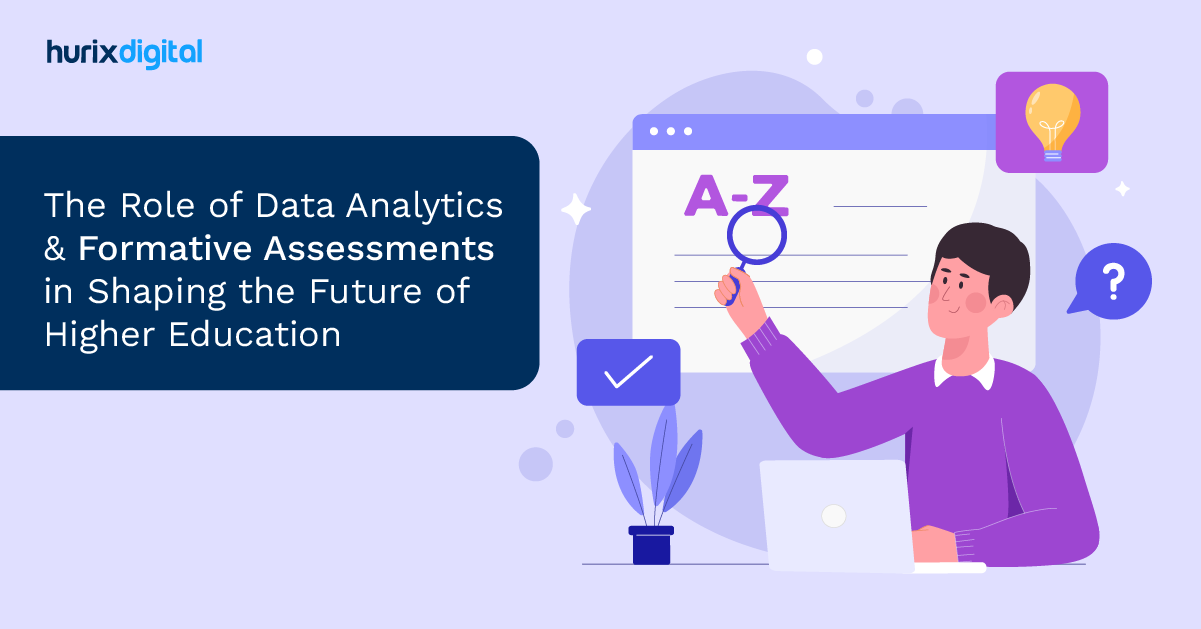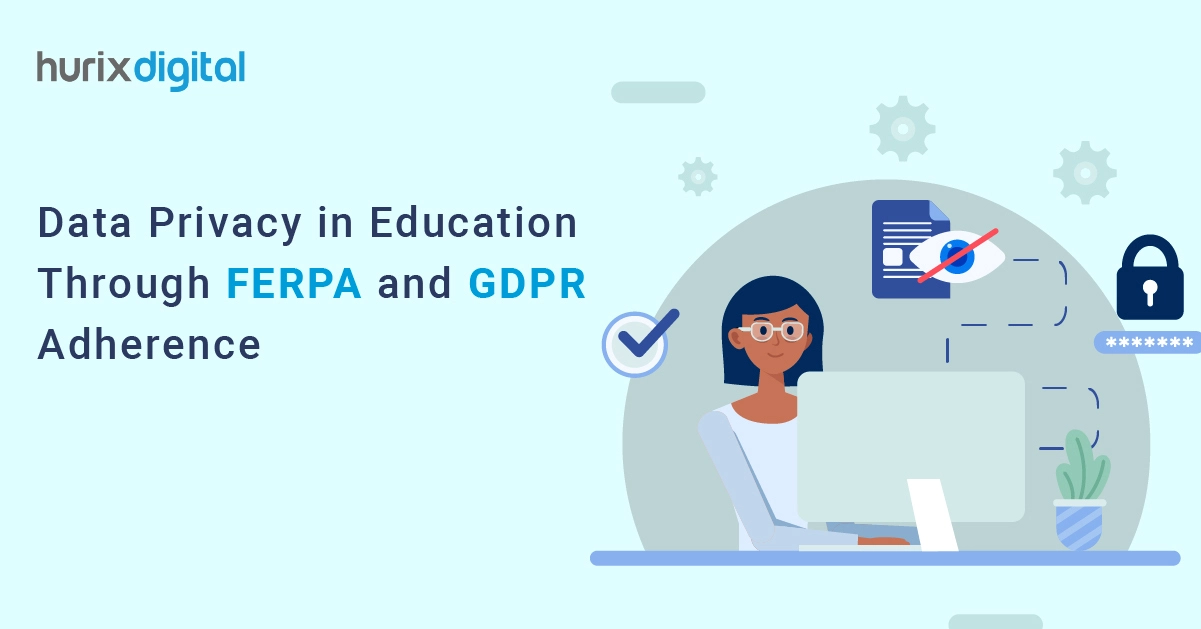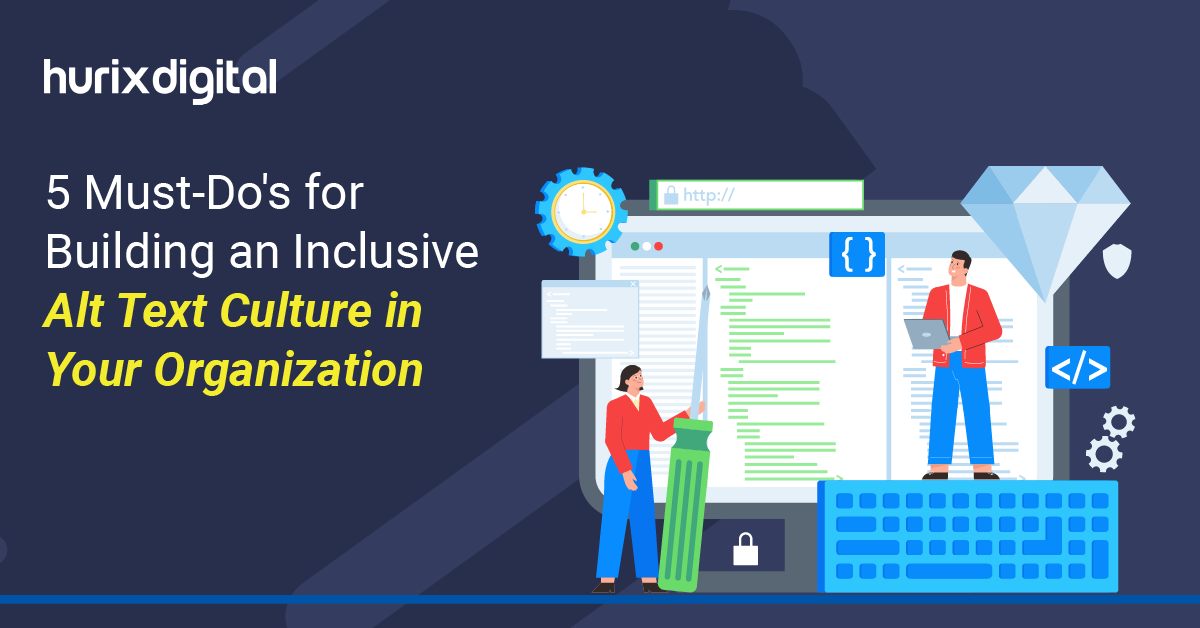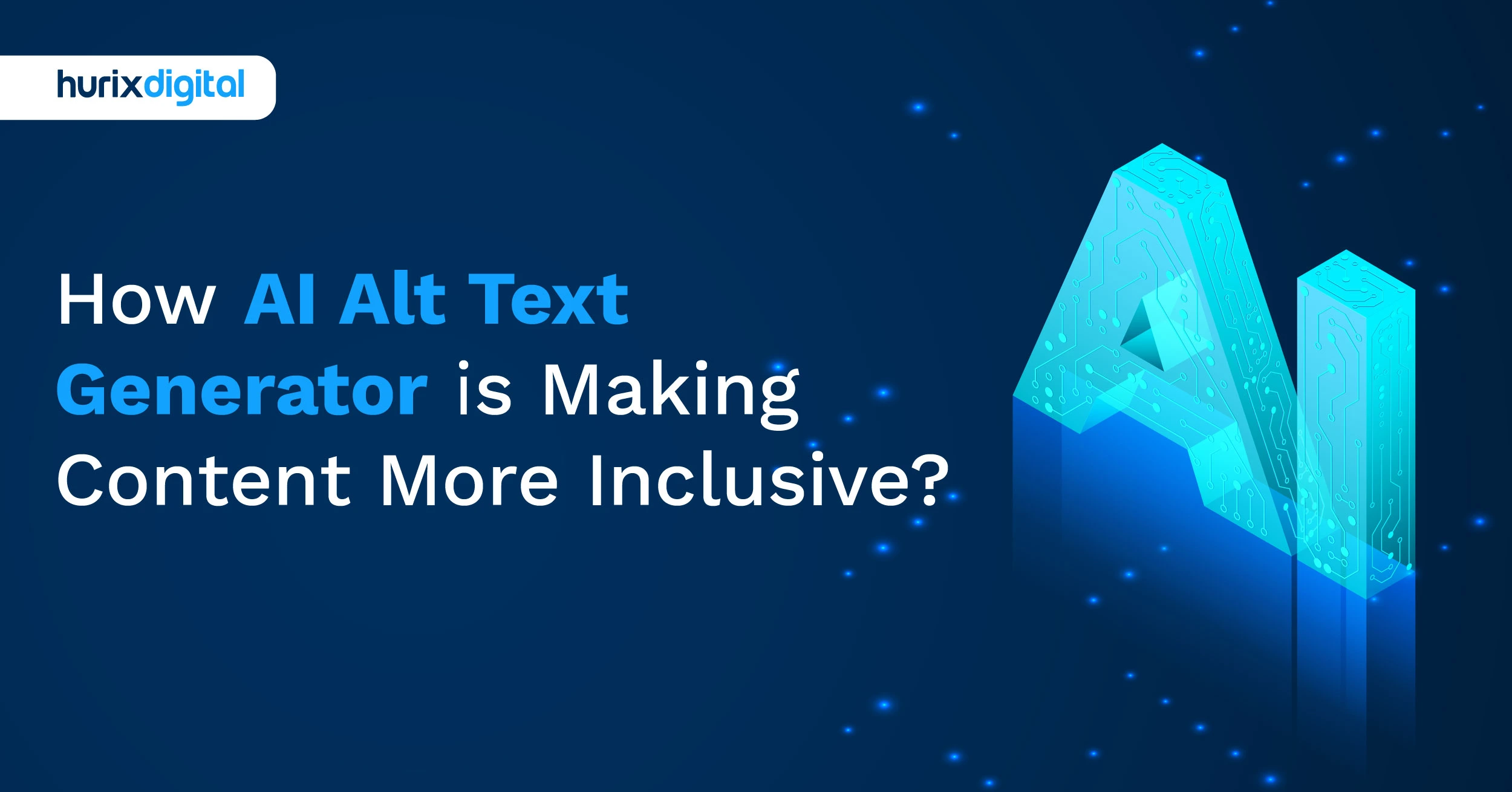
How AI Alt Text Generator is Making Content More Inclusive?
Summarize with:
But what if some of your audience cannot see or perceive your images? What if they rely on assistive technologies, such as screen readers, to access your content? How can you ensure that they get the full value and meaning of your images and that they don’t miss out on any important information or context?
This is where alt text comes in. Alt text, short for alternative text, can help you make your content more accessible and inclusive for everyone, regardless of their abilities or preferences. However, writing alt text can be challenging and time-consuming.
Fortunately, with accessibility advancements and AI and machine learning innovation, writing alt text has become easier and faster. This blog will not only explore how AI-powered alt text can boost your content accessibility, but also provide tips on how to use alt text effectively.
Table of Contents:
- What is AI-Powered Alt Text and How does Alt Text Work?
- Types of Images
- What is an AI Alt Text Generator?
- How to Write Alt Text for Different Types of Images?
- What are the Challenges of Writing Alt Text Manually?
- How Can Alt Text Automation Help You Overcome These Challenges?
- What are the Features of a Good Alt Text Automation Tool?
- What are the Benefits of AI-Powered Alt Text for Content Accessibility?
- How do Automated Alt Texts Meet WCAG Standards?
- Our Two Cents
What is AI-Powered Alt Text and How does Alt Text Work?
AI-powered alt text, also known as AI alt text, is a type of alt text that is generated by artificial intelligence using machine learning algorithms and models. AI-powered alt text generators can automatically analyze and describe the content and context of an image using natural language processing and computer vision techniques.
The basic steps involved in using AI in web content accessibility are:
- Image Analysis: The AI-powered alt text generator takes an image as input and analyzes its features, such as colors, shapes, textures, objects, faces, emotions, actions, and scenes. The image analysis can be done using various computer vision techniques, such as object detection, face recognition, scene understanding, and optical character recognition (OCR).
- Text Generation: The AI-powered alt text generator then generates a textual description of the image based on the features extracted from the image analysis. Text generation can be done using various NLP techniques, such as natural language generation (NLG), natural language understanding (NLU), and natural language inference (NLI).
- Text Optimization: The AI-powered alt text generator then optimizes the text based on the purpose, content, and context of the image, and the best practices and guidelines for alt text. Text optimization can be done using various NLP techniques, such as text summarization, text simplification, text correction, and text evaluation.
The output of the AI-powered alt text generator is a textual description of the image that provides equivalent information for people who cannot see or perceive the image.
Types of Images
There are different types of images used in content creation, each requiring a different approach to writing alt text. Here are some of the most common types of images:
- Decorative Images: These images are used to make content more visually appealing but do not convey any information. Examples include background images or borders.
- Informational Images: These images provide information that is relevant to the content. Examples include graphs, charts, and maps.
- Illustrative Images: These images are used to illustrate a point or concept. Examples include photographs or drawings.
What is an AI Alt Text Generator?
Before discussing AI alt text generators, let’s dive a bit deeper into the definition of alt texts. Alt text refers to a concise yet detailed written description of any image or multimedia element used on a web page.
For example, let’s say you put up a picture of a group of children studying together. A suitable alt text for this image would be something like – Three children sitting on a wooden table, reading literature.
As you can see, the above alt text is woven to encapsulate the essence of the picture while being brief and detail-oriented. However, manually achieving this accuracy level can be difficult and time-consuming.
That’s where AI alt-text generators like Equalsense come to the rescue. Powered by AI technology, an AI alt text generator is a tool that generates SEO-friendly alt texts for images.
How to Write Alt Text for Different Types of Images?
- Decorative Images: Alt text is not necessary for decorative images, as they do not convey any information. However, it is best practice to leave the alt text attribute blank or use an empty alt text attribute to inform screen readers that the image is decorative.
Example: 
- Informational Images: For informational images, the alt text should concisely describe the image’s content, including any relevant data or statistics.
Example: 
- Illustrative Images: For illustrative images, the alt text should describe the image’s content and context, including any relevant emotions or themes.
Example: 
What are the Challenges of Writing Alt Text Manually?
Writing alt text manually can be a time-consuming and tedious task, especially if you have a lot of images or complex visuals in your content. Depending on the size and complexity of your content, writing alt text manually can take hours or even days of your time, which could be better spent on other aspects of your content creation process.
Moreover, writing effective alt text requires some skills and knowledge, such as:
- Understanding the purpose and meaning of the image and how it relates to the rest of the content. You need to consider what information or message the image conveys and what the user needs to know about it.
- Use clear and concise language that is appropriate for your audience and tone. You need to avoid jargon, technical terms, or vague words and use simple and descriptive language that is easy to understand and follow.
- Avoid redundancy and repetition. You need to avoid repeating the information that is already provided in the caption, title, or surrounding text and focus on the unique and relevant aspects of the image.
- Following the best practices and guidelines for writing alt text, such as using proper punctuation, capitalization, and grammar, and keeping your alt text between 50 and 125 characters.
If you write poor or inaccurate alt text, you may confuse or frustrate your users or even lose their trust and interest. For example, if your alt text is too vague or generic, such as “a graphic of” or “an image of,” you may not provide enough information for the user to understand the image.
Too long or detailed alt text, such as describing every element or color in the image, may overwhelm or bore the user. Lastly, using irrelevant or misleading alt text, such as keywords that do not match the image or the content, may harm your SEO and user experience.
How Can Alt Text Automation Help You Overcome These Challenges?
Alt text automation is the use of artificial intelligence (AI) and machine learning (ML) to generate alt text automatically based on the features and context of the image. Alt text automation can help you overcome the challenges of writing alt text manually by:
- Saving you time and resources by reducing the manual effort and cost involved in writing alt text. You can simply upload your images to an alt text automation tool and get alt text generated in seconds or minutes, depending on the number and complexity of your images.
- Ensure that your content is accessible and engaging by providing accurate and relevant alt text that meets your audience’s standards and expectations. Alt text automation tools use advanced algorithms and models to analyze the image and generate alt text that captures the essence and context of the image using natural and appropriate language.
- Improving your SEO and user experience by providing consistent and optimized alt text that matches your keywords and content. Alt text automation tools can help you ensure that your alt text is aligned with your SEO strategy and goals by using the keywords and phrases that you want to rank for and avoiding duplication or spamming.
What are the Features of a Good Alt Text Automation Tool?
Alt text automation tools vary in their features and capabilities, depending on the technology and platform they use. However, some of the common and essential features of a good alt text automation tool are:
- Accuracy and Relevance: The tool should be able to generate alt text that is accurate and relevant to the image and the content and that conveys the information and message that the user needs to know. It should also be able to handle different types and formats of images, such as photos, graphs, diagrams, icons, logos, etc., and generate appropriate alt text for each type.
- Speed and Efficiency: An AI alt text generator should be able to generate alt text quickly and efficiently without compromising the quality or reliability of the alt text. It should also be able to handle large volumes and batches of images and provide alt text for multiple images at once or in a single file or document.
- Customization and Flexibility: Automated alt text creation tools should be able to customize and adapt the alt text to your specific needs and preferences, such as your audience, tone, style, language, keywords, etc. It should also be flexible and compatible with different platforms and devices, such as web, mobile, desktop, etc., and allow you to integrate and use the tool with your existing tools and workflows, such as content management systems, authoring tools, etc.
- Feedback and Improvement: An alt text-generating AI tool should be able to receive and incorporate your feedback and suggestions. The tool should also be able to learn from your data and usage and update and refine its algorithms and models accordingly to provide better and more personalized alt text over time.
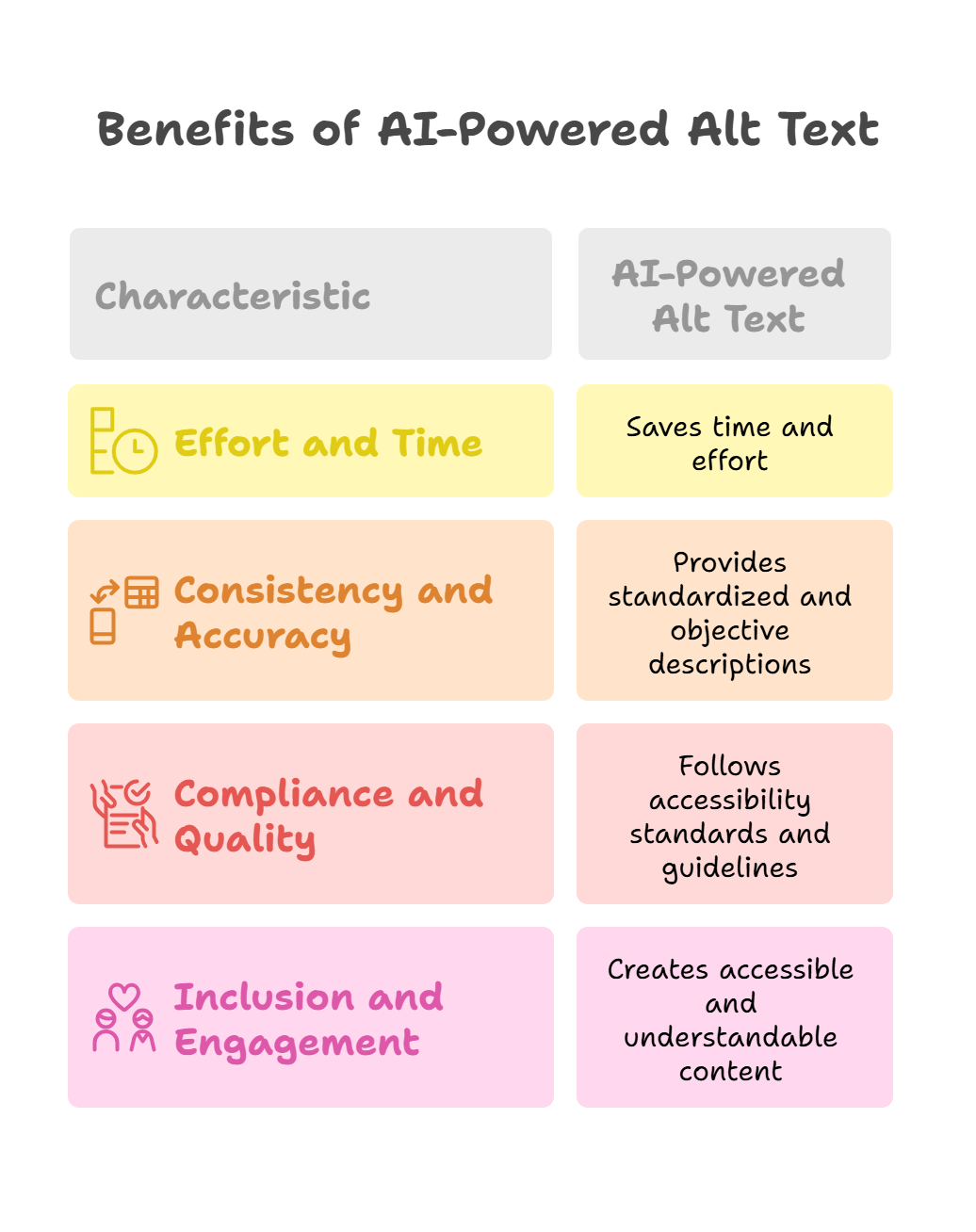
What are the Benefits of AI-Powered Alt Text for Content Accessibility?
Artificial intelligence in accessibility has many benefits, such as:
1. Save Effort and Time
Writing alt text manually can be tedious and time-consuming, especially if you have many images to describe.
AI-powered alt text generators can save you effort and time by automatically generating alt text for your images in seconds. If needed, You can review and edit the generated alt text to ensure its quality and accuracy.
2. Consistency and Accuracy
Writing alt text manually can be prone to human errors and inconsistencies, such as spelling, grammar, and missing or irrelevant information.
Using AI for content accessibility can provide more consistent and accurate alt text by using standardized and objective criteria to analyze and describe your images. These generators can also handle complex and diverse images, such as graphs, charts, diagrams, maps, and infographics, that may be difficult to describe manually.
3. Compliance and Quality
Writing alt text manually can be challenging and confusing, especially if you are unfamiliar with the best practices and guidelines for alt text, such as WCAG 2.1. Machine learning for alt text can help you comply with the accessibility standards and expectations by following the best practices and guidelines for alt text.
4. Inclusion and Engagement
Writing alt text manually can be limiting and exclusive, especially if you do not consider the needs and preferences of your diverse audience, such as people with disabilities, people with low literacy, people with different languages, and people with different devices.
AI alt-text generators can help you create more inclusive and engaging content by providing alt-text that is accessible, understandable, and appealing to your audience.
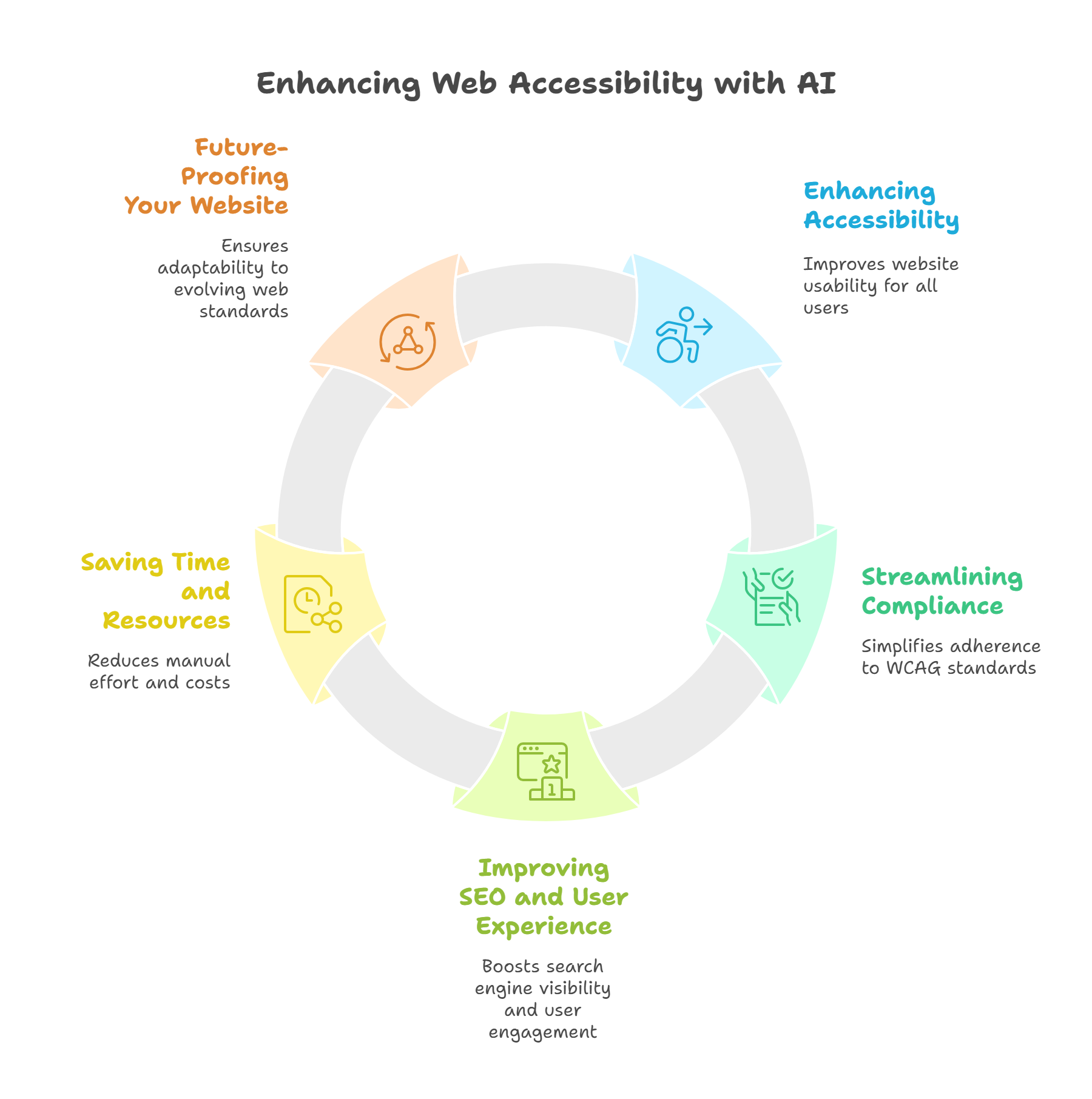
How do Automated Alt Texts Meet WCAG Standards?
Below are the top 5 ways AI alt text generators can effortlessly help you achieve WCAG compliance:
1. Enhancing Accessibility with AI
The digital realm is vast, and ensuring that everyone can navigate it is a challenge that AI Alt Text Generators are adeptly meeting. These tools are a cornerstone in the push for universal web accessibility, providing:
- Automated Alt Text: AI swiftly generates descriptive text for images, which is crucial for screen reader users.
- Image Recognition Technology: Advanced algorithms interpret visual content, making it accessible to all.
- Accessibility Features: From text-to-speech to easy navigation, AI enhances the functionality of websites for users with disabilities.
By integrating these AI-driven solutions, websites can comply with WCAG standards and offer a richer, more inclusive user experience. This proactive approach to accessibility is not just about adhering to guidelines but about opening the web to everyone, regardless of ability.
2. Streamlining Compliance Processes
To achieve digital inclusivity, streamlining compliance processes is important. AI Alt Text Generators are at the forefront of this revolution, simplifying the adherence to Web Content Accessibility Guidelines (WCAG). Here’s how they’re changing the game:
- Alignment with Standards: AI tools are designed to meet web accessibility standards, ensuring that alt text is present and meaningful.
- Efficiency in Compliance: AI eliminates the need to manually create alt text for every image, making WCAG compliance more manageable.
- Accuracy and Consistency: AI’s text-to-image recognition capabilities ensure the alt text is accurate, providing consistent quality across the website.
Automating the generation of alt text can help businesses focus on their core offerings while staying compliant with international standards. This saves time and reduces the risk of human error, making compliance a seamless part of the web development process.
3. Improving SEO and User Experience
The benefits of AI Alt Text Generators extend beyond compliance; they also play a crucial role in Search Engine Optimization (SEO) and enhancing the user experience. Here’s the impact they have:
- SEO Enhancement: Search engines use alt text to understand and index images, which can improve your site’s visibility and ranking.
- User Engagement: Well-crafted alt text can enrich the user experience, especially for those using screen readers or with cognitive disabilities.
- Wider Reach: By making your content more accessible, you’re complying with standards and reaching a broader audience.
Incorporating AI alt text generators can lead to a more inclusive web environment where information is readily available to everyone. This inclusivity can translate into increased user satisfaction, higher engagement rates, and, ultimately, better business outcomes.
4. Saving Time and Resources
When managing a website, time is gold, and resources are precious. AI Alt Text Generators are like having a super-efficient assistant.
Here’s why:
- Quick as a Flash: Imagine writing descriptions for thousands of images. AI does that in a snap, freeing up your schedule.
- Cost-Effective: No need to hire extra staff just for alt text. AI has got this, which means more money stays in your pocket.
- Consistency is Key: Every image receives the same high-quality treatment, making your website feel professional and polished.
By automating the alt text process, AI alt text generators save you hours and ensure that your resources are allocated to where they matter most: growing your business and enhancing your website’s content.
5. Future-Proofing Your Website
The internet is always changing, and keeping up can be tough. But with AI Alt Text Generators, you’re setting your website up for success, no matter what the future holds:
- Stay Ahead of the Curve: As web standards evolve, AI tools learn and adapt, keeping your site on the cutting edge.
- Ready for Regulation Changes: When accessibility laws update, AI Alt Text Generators adjust accordingly, so you’re always compliant.
- Competitive Edge: With AI, your website is not just accessible; it’s a step ahead, keeping visitors coming back.
Incorporating AI Alt Text Generators means you’re not just keeping up; you’re leading the way. It’s about making a smart choice today that sets you up for a brighter tomorrow.
Our Two Cents
As we have covered in this piece, alt text plays a crucial role in expanding your audience reach to 2.2 billion more people and tremendously boosts your business’ commitment to fostering inclusivity.
But with AI-driven alt text, you gain more than just the benefit of inclusivity. An AI alt text generator helps overcome language barriers and scalability, enhances your brand voice, and can even boost your content’s SEO ranking.
With all these advantages at play, a business must embrace AI-driven accessibility. The experts at Hurix Digital have crafted a thoughtful and efficient AI alt text generator called Equalsense that makes it a perfect fit for you.
So, without further ado, let’s create a compelling blend of creative alt text where you don’t need to hold back on your creativity in your images and can freely communicate with your potential customers through your content!
Contact us now to get started!
Summarize with:

Vice President – Content Transformation at HurixDigital, based in Chennai. With nearly 20 years in digital content, he leads large-scale transformation and accessibility initiatives. A frequent presenter (e.g., London Book Fair 2025), Gokulnath drives AI-powered publishing solutions and inclusive content strategies for global clients
 Upcoming Masterclass | Build an Army of Brand Evangelists using Training & Development | November 20th, 8:30 AM PDT | 11:30 AM EDT | 10:00 PM IST
Upcoming Masterclass | Build an Army of Brand Evangelists using Training & Development | November 20th, 8:30 AM PDT | 11:30 AM EDT | 10:00 PM IST

